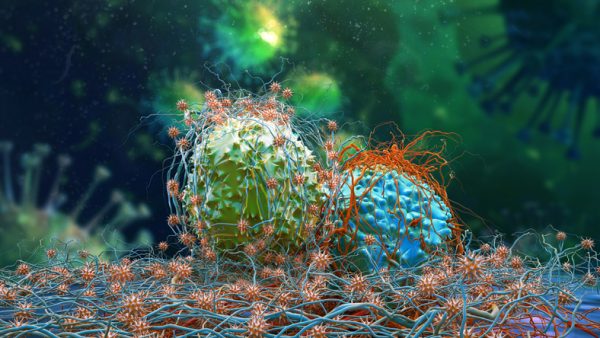
A test designed for early detection of cancers from a blood sample was able to more than double the number of cancers picked up through screening, including seven cancers that currently do not have any standard-of-care screening methods, according to a new study.
The study, sponsored by Cambridge, Massachusetts-based Thrive Earlier Detection and carried out by Johns Hopkins University and Geisinger Health, was presented Tuesday at the American Association for Cancer Research’s annual meeting. Titled DETECT-A, the study enrolled 10,006 women with no history of cancer and was published in the journal Science. DETECT-A only enrolled women as one of the cancers included, ovarian cancer, only occurs in women, and investigators wanted comparisons to remain consistent. The AACR meeting was to take place in San Diego, but is happening virtually this year due to the Covid-19 pandemic.

Heard at HLTH 2024: Insights from Innovative Healthcare Executives
Executives from Imagine360, Verily, BrightInsight, Lantern, and Rhapsody shared their approaches to reducing healthcare costs and facilitating digital transformation.
It found that by implementing Thrive’s blood test on top of standard-of-care screening procedures like mammograms, the percentage of cancers detected through screening increased from 25% to 52%. Overall, 96 participants were found to have cancers, with 26 of them initially detected via blood test, including 15 who had mutations in circulating tumor DNA and 12 who had elevated levels of protein biomarkers, with one participant having both. The blood test by PET-CT imaging also showed a high degree of specificity, 99.6%.
“If you have high specificity, it means you have few false positives,” said DETECT-A principal investigator Adam Buchanan, a genetic counselor and associate professor at the Geisinger Genomic Medicine Institute, in a phone interview. “You want to eliminate false positives because when talking about cancer, you can have follow-up procedures that can be risky.”
Buchanan noted that the primary goal of the study was to ensure a new technology is safe and not putting undue harm on participants. It was also designed to show if blood testing could be integrated with standard screening methods for breast, colon and lung cancers. However, it also detected cancers for which screening is not available, including lymphoma and cancers of the appendix, uterus, thyroid, kidneys, ovaries and cancers arising from an unknown primary site, with a 31% sensitivity.
“I think this kind of test fits best in primary care as one of the options that primary care clinicians have for cancer screening,” Buchanan said.
Questions that remain include how well the test could work in men and across a broader range of age groups.
“The performance of the test is affected by background cancer risk, and so it can also be affected by the rates of cancer screening among men versus women,” Buchanan said.
Additionally, different tumor types appear to shed different amounts of circulating tumor DNA, such that the test’s ability to pick up breast cancer is lower, probably because those tumors don’t shed as much DNA in their early growth stages, he said. It’s probably also because it affects a population that tends to be adherent with respect to mammograms, so a lot of the breast cancers picked up were at Stage I.
According to a table included in the published study, 16 cases of Stage I breast cancer and four cases of Stage II were first detected through mammography, while the blood test was first to pick up only one case, at Stage III.
Other questions that remain unanswered include how often the test should be performed, such as every couple of years or every five years. In addition, there may need to be additional support in place, as little is known about how people might react to getting an abnormal test from a blood draw. The test is also being refined so that instead of requiring secondary blood tests for confirmatory purposes, that can all be done with the initial test, Buchanan said.
Photo: nopparit, Getty Images










